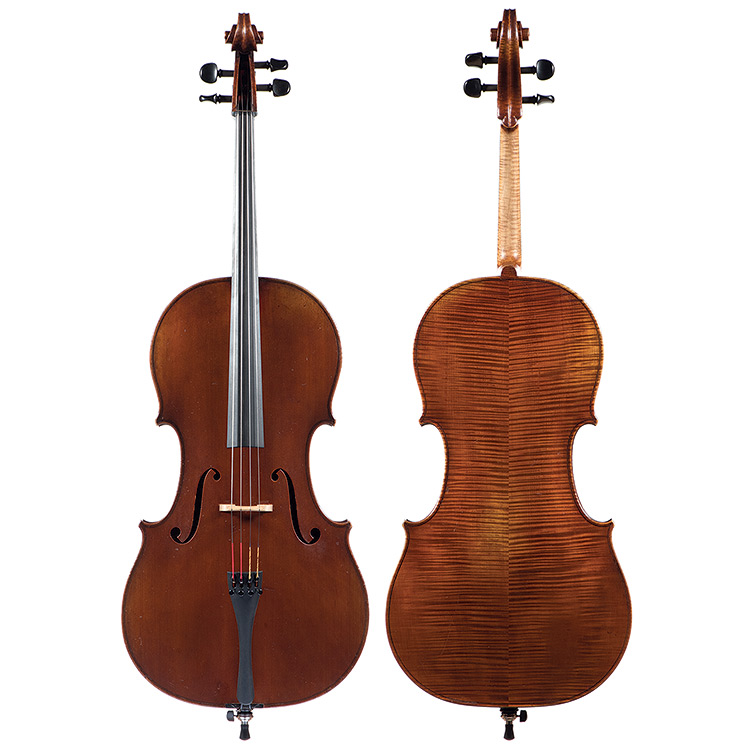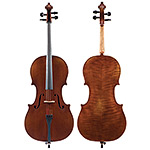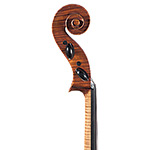German cello, Mittenwald, early 20th century
Mittenwald, Germany was established as a major center for violin making in the early 18th century when Mathias Klotz (1656–1743) settled there to build stringed instruments and raise his sons as luthiers. His second son, Sebastian Klotz (1696–c. 1775), became a highly skilled maker and taught his own sons the craft, who in turn continued the family’s successful business through the beginning of the 19th century.
With the rise of the Industrial Revolution of the early 19th century, an important period began—that of the mass production of stringed instruments, built by assembly-line construction—in the European violin making centers, including the German towns of Mittenwald and Markneukirchen. As a reaction against the industrialization of instrument making, Maximilian II of Bavaria established the Geigenbauschule in Mittenwald in 1858, an instrument-making school which helped restore the craft of violin making by individual artisans. Violin maker Ludwig Neuner (1840–1897) also contributed to re-establishing violin making as an art form by bringing to Mittenwald the techniques that he learned in Paris while working in the famous atelier of Jean-Baptiste Vuillaume.
Today, Mittenwald is home to numerous professional violin makers as well as students at the world-renowned Geigenbauschule. It is also a popular tourist destination, where violin enthusiasts can visit the Violin Making Museum exhibiting the town’s long history of violin making from Mathias Klotz to the present day.



